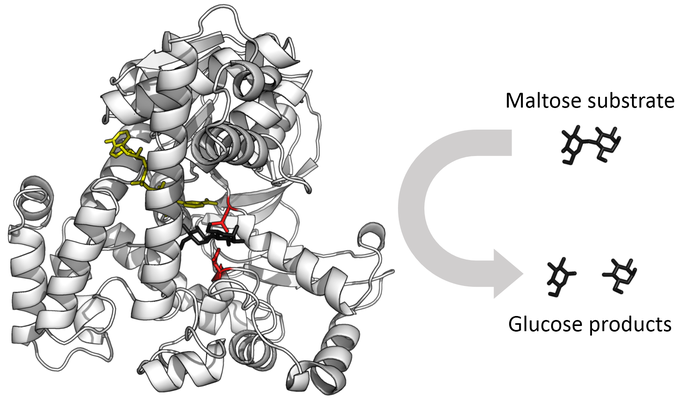Enzymes are proteins that play a significant role in various food preparation processes, affecting texture, flavor, and preservation. They act as biological catalysts, making certain reactions occur more easily or more quickly. These proteins are present naturally in many foods and are also used in processed forms to achieve specific culinary outcomes.
Enzymes break down proteins, starches, and sugars
In cooking, enzymes are utilized in several key processes. Proteolytic enzymes, such as papain from papaya and bromelain from pineapple, are commonly used to tenderize meat by breaking down proteins in muscle fibers and connective tissues. This process reduces toughness and enhances the palatability of the meat. Amylases are enzymes that convert starches into sugars, playing a crucial role in baking, where they help break down complex carbohydrates in flour, contributing to the texture and flavor of bread. Lactase is used to break down lactose in dairy products, making them digestible for individuals with lactose intolerance.
Enzymes are also involved in fermentation processes, such as those used in cheese-making, where rennet (containing the enzyme chymosin) helps coagulate milk proteins to form curds. Additionally, enzymes are used in fruit juice clarification, preventing the cloudiness that can occur from pectin, which is broken down by pectinase.
Enzymatic browning
Enzymatic browning is a biochemical process that occurs in fruits and vegetables when they are exposed to oxygen, resulting in a brown coloration. This reaction is primarily catalyzed by the enzyme polyphenol oxidase (PPO), which oxidizes phenolic compounds present in the fruit into quinones. These quinones then polymerize to form brown pigments known as melanins. Enzymatic browning is commonly observed in fruits such as apples, bananas, and avocados after they are cut or bruised. While this browning can affect the visual appeal and perceived freshness of the fruit, it does not necessarily indicate spoilage or a loss of nutritional value. However, in commercial food processing and culinary preparation, enzymatic browning is often undesirable as it can lead to a negative perception of the food's quality. Various methods are employed to control or prevent enzymatic browning, such as reducing the fruit's exposure to oxygen, lowering the pH with acidic substances like lemon juice, or applying heat to denature the enzymes.
Acid and temperature affect enzyme behavior
Enzymatic activity is influenced by factors such as temperature, pH, and the presence of inhibitors or activators. Most enzymes have an optimal temperature range, typically around 30-40°C (86-104°F), beyond which they may denature and lose functionality.
Similarly, each enzyme has a specific pH range in which it operates most effectively; too much acidity or alkalinity can reduce activity or render the enzyme inactive.
Enzymes catalyze reactions by binding to specific substrates and converting them into products without being consumed in the process. This catalytic function is highly specific, meaning that enzymes generally act on particular substrates.
Negative enzymatic effects
While enzymes can be beneficial in the kitchen, they also present challenges. For example, the overuse of tenderizing enzymes like papain or bromelain can result in meat with an undesirable mushy texture if left to marinate for too long. Similarly, enzymes in fresh pineapple can prevent gelatin from setting properly in desserts, as bromelain breaks down the gelatin proteins. Home chefs must also consider temperature control; cooking at temperatures too high can inactivate enzymes before they have completed their intended function, while too low temperatures may not activate the enzymes at all.

